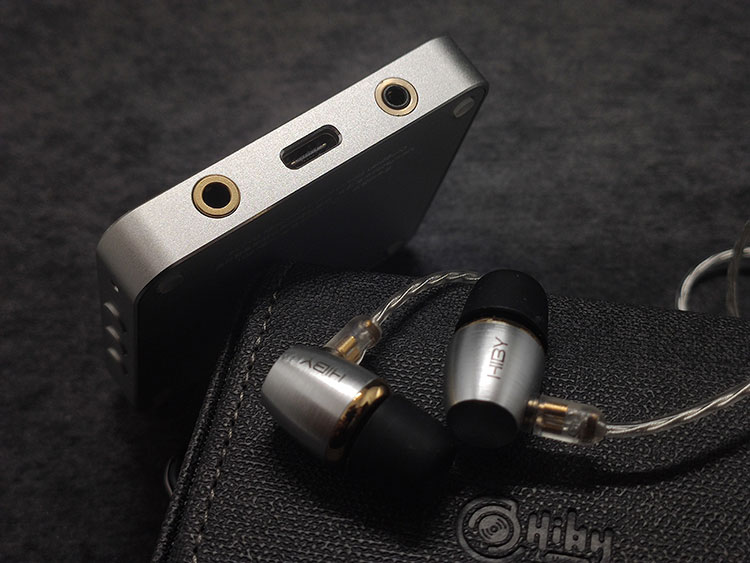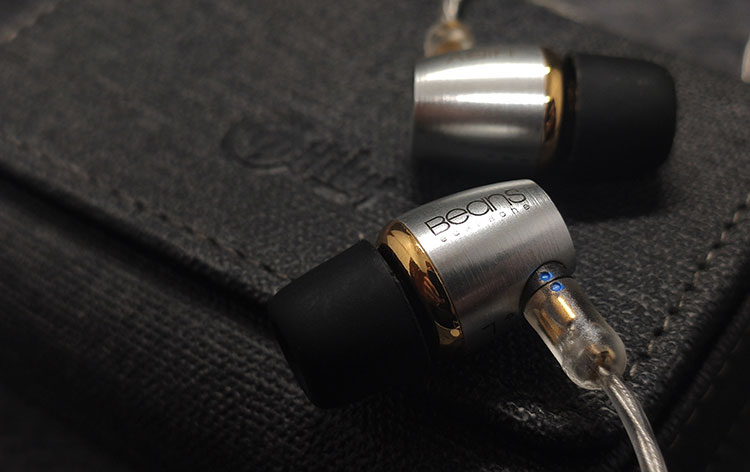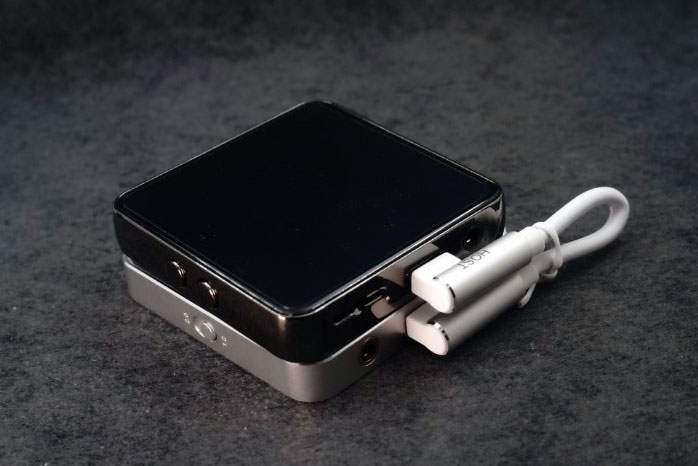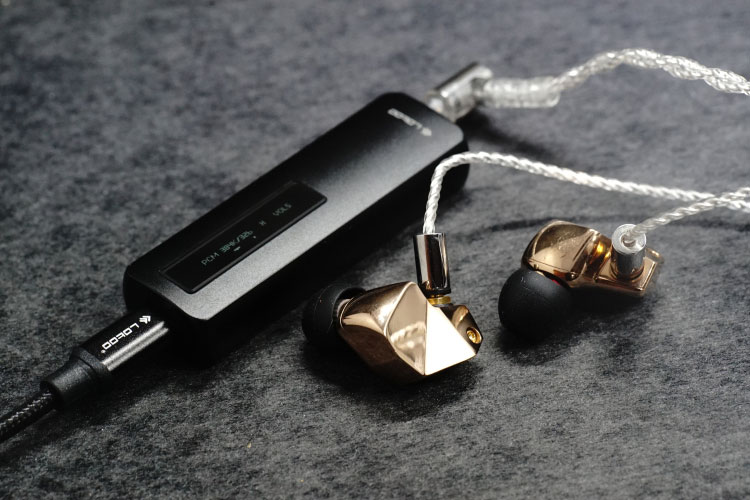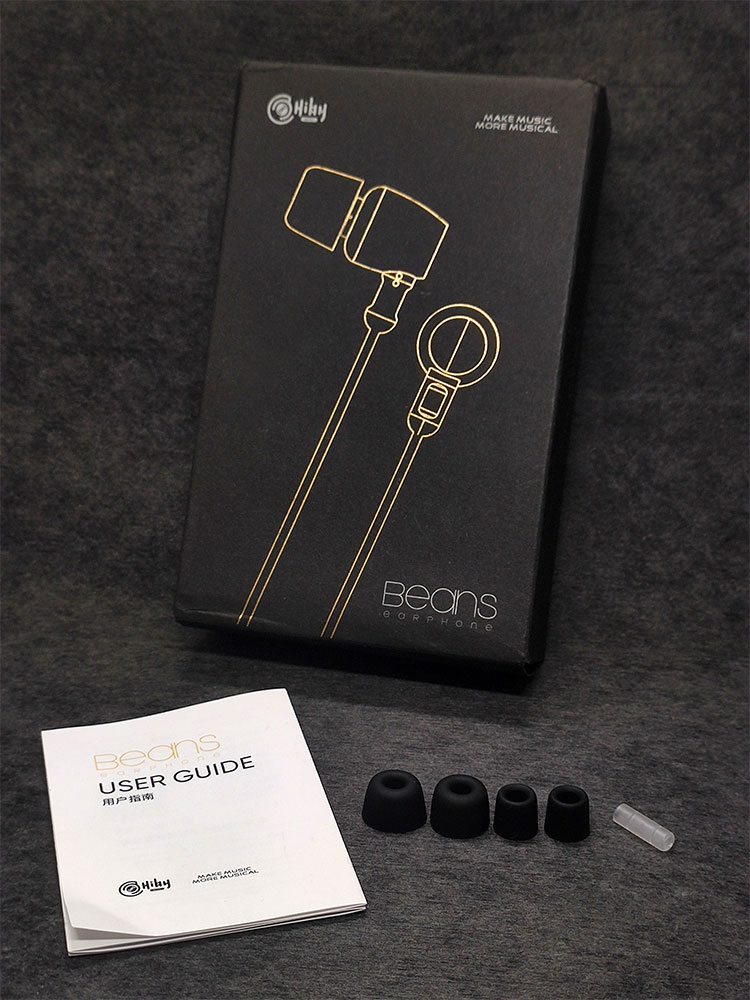The HiBy FD1 & Beans is an affordable compact USB-powered DAC/ amplifier and a single dynamic driver IEM combo. They are priced at $59 and $69 respectively.
Disclaimer: The HiBy FD1 & Beans were sent to us as samples in exchange for our honest opinion in this review. We thank HiBy Music for this opportunity.
To learn more about HiBy reviews on Headfonics you can click here.
Note, this review follows our new scoring guidelines for 2021 which you can read up on here.
Hiby has dug into the niche and brought to us an interesting combo for more flexibility and fun this time – the Beans and the FD1. These two are designed to stack neatly with the R2 we previously reviewed in 2020. The modular design, a portable DAP, DAC Amp, and IEM comes together as a portable suite, but they are all capable as standalone products.
The Beans IEM comes with a 10mm carbon nanotube diaphragm equipped driver and silver-plated OFC detachable cable. The FD1, on the other hand, is a USB-powered compact DAC/amplifier featuring balanced and unbalanced outputs.
Undoubtedly this is one of the most affordable stack combos in the market, we have taken a good look at the R2 earlier and this time we will find out what the rest of the combo can do with the additional two pieces of the puzzle!
Tech Highlights
FD1
The FD1 is largely driver-free, device powered, and supports Android, iOS, Windows, macOS driverless. You can hook it up with smartphones, computers, tablets, and digital audio players with the supplied USB-C cables.
Inside the FD1, the decoder and amplifier house dual ES9118 DAC chips with dual active crystal oscillators for lower jitter, phase noise, and higher signal accuracy.
The oscillators are separately clocked for multiples of 44.1Hz and 48Hz audio signals with support up to native DSD128 or 32BIT/384k PCM decoding, (on Windows 10 drivers are required for DSD).
When paired with the R2 the output power and decoding quality are clearly enhanced and it will also expand the R2’s I/O with an additional 2.5mm balanced output.
Beans
The Beans IEM, on the other hand, uses a 10mm CNT Carbon nanotube membrane driver unit that involves specially constructed nanomaterial (nano-scale radius and micro-scale length with sealed tube end).
Hiby explains that it promises richer treble details compared to common TPE membranes and sounds punchier in the low-end compared to the very stiff DLC membranes.
The sound signature does fall between TPE and DLC type IEMs and strives for a good balance between decay speed and clarity, we will talk more about the sound in the impression section.
Design
FD1
The R2, FD1, and Beans IEM form a modular combo and could pretty much handle all daily needs at work or during the commute. Unlike the glossy finish on R2’s framework, the FD1 is encased in a satin silver-finished aluminum case.
The size and thickness are pretty much identical to the R2, you can stack them together with the jelly pad supplied by HiBy and it will fit quite firmly. There are also rubber legs on the base to let it cling to other surfaces if you just put it on another device.
I like how Hiby adds some contrast to the combo, and it is a perfect match to the R2 while looking very minimalistic and stealthy when being used as a standalone DAC for the PC or for other devices.
You will find the navigation buttons on one side, the 3.5mm SE output and balanced output on one other side, and a 1.0/2.0 knob for you to switch between USB connection modes.
There is also an LED indicator to show different statuses. Do prioritize using the USB 2.0 in all cases, although USB 1.0 will give you plug and play capability when you need a sound card using a public PC or devices that do not have an audio output.
It is also a handy solution if you are using your phone via OTG with a 2.5mm terminated IEM. You can download the firmware with DSD support for PC from HiBy’s site also.
Beans
Moving onto the Beans, it takes a different design approach when compared to the Seeds series, but the build is also fully metallic. The silver brushed finish on the vented body is nicely adorned with a gold-plated copper front chamber, with the L/R markings on the lower side of the body.
The 2-pin plug is injection molded within clear plastic that keeps the design simple and low in profile, you will also notice some painted markings to indicate the correct pinning alignment.
Cable
The cable is exceptionally soft and thin but is quite tangle-free, also looks and feels really good. Overall, this IEM is nicely built and there is good attention to detail in the materials and design.
The handling is very straightforward and light in weight so you can easily wear it over the ear or straightly plugged in. In both ways, it does not stress the ear at all, and you can switch to other 2-pin 0.78mm terminated IEM cables easily.
Isolation is decent and I get the best seal with foams wearing it over the ear, there is no microphonics at all and it does not fall out when I put it on to jog.
Packaging & Accessories
The two items come in simple packages with user manuals and accessories inside. The Beans comes with an extra case that offers good protection. You could actually fit the R2 and FD1 as a combo in it when you use the L-shaped USB-C cable. Foams and tips in S/M/L sizes are provided with the Beans.
For the FD1 you will get some cables and a jelly pad that allows you to stick it to the R2 or on phones, this is especially useful if you do not want it to be dangling. Aside from the normal USB cable, you will be getting two USB-C cables that have two straight plugs or two L-shaped plugs, very handy for different pairings.
Sound Impressions
We are testing the FD1 and Beans with the R2 as a suite and with other gears to see how the synergy is. Both items are burnt in together with the R2 for around 2 weeks with various burn-in tracks and white noise.
Impressions are made with the stock tips on the Beans and the FD1 is mainly tested with the R2, various phones, and DAP’s USB output also my laptop’s USB output. The Beans have a 32Ω impedance on it and 109dB SPL sensitivity, so they can be powered by a weak source such as a smartphone but they will definitely scale up with better power.
Beans
Bass
The Beans has a rather flat and boosted bass tuning that will match mainstream pop music and percussion instruments well with its small hint of warmth.
The bass is quite soft and forwarded when paired with the R2, bleeding slightly into the vocal part but could be equalized to sound more balanced. When powered by the FD1 you can hear it open up more with the bass to lower mids becoming clearer with more energy.
The Beans has a moderately punchy and fast decay speed while being very full in body. Kicks are firmer when fed with higher gain also. When sufficiently powered it sounds natural, layered, and engaging. It also sounds less boomy and reduces the veil on the mids which you can pick up when underpowered.
The rather natural-sounding stock tuning is not really lacking in any respect considering the price and will be a good practice material for equalizing if you want some extra detail.
Vocal Range
The midrange has a neutral-sounding timbre when powered by the R2 or phones. The moderate speed of the driver helps the Beans to delivered a rather uncolored vocal performance.
With most vocals, there is a good body, and the image is quite forward. There is a slight lack of resolution but it is well balanced by the lifted treble to sound full-bodied with reasonable definition at the same time.
I will prefer listening to cleaner or high-pitched vocals that sounds swifter together, with a thicker voice the lower end may get a bit fat and not as defined if you are used to more advanced gears.
With the FD1 added to the R2, there is immediately more clarity and control in the headroom. At the same time, it adds more separation between the backing instruments and the vocal as well, which helps it render darker voices with more authority and enhanced resolution.
The upper mids on the beans are slightly lifted for clarity, bringing closer the vocal while strengthening its texture. There is some sparkle in the treble that adds extra clarity to balance out the bass such that it won’t sound too fat, and it is carefully rounded to not sound harsh.
Treble
The treble on the Beans is fairly extended and you can feel some frequencies being boosted for more vocal presence. Snares are clearly heard, and you can hear some good air, but when it comes to flutes and some higher notes it is not as strong in intensity.
A gentle roll-off is present and with pop music, it does not sound contained. However, with some larger ensembles and string works, it feels congested and you will need to equalize away some bass to make it smoother.
Overall, it has the right amount of energy to cleanly outline instruments and thinner voices, and I like how it does not sound harsh while allowing enough clarity in the lower treble to give the vocal range a bit more presence.
FD1
Adding the FD1 to the PC or to the R2 you will immediately feel the output being much more open and the vocal density strengthened.
The tuning is still similar to the R2, but you will feel more control and power especially in the bass, such gives it more dynamics and more headroom, defining the bass with more layering while enhancing the overall resolution.
The FD1 is able to drive easily drive the Beans giving it a more energetic sound but also more control in the midrange, and an even firmer bass than paired directly with the R2.
With more energy and air in the upper mids, it gets more resolving and natural when compared to R2’s output alone. It does not feel like the FD1 is adding much to the volume level, but it definitely beats the R2 in terms of perceived quality in sound.
When the FD1 is added to my phone it immediately up the dynamic range performance. With a decent boost in power, it works much better for IEMs that need the swing and is able to handle bigger ensembles and more complex instrumental passages.
The FD1 balanced output has a superior performance to the SE option. The sound stage is more open and the midrange is more elaborated, more holographic than on the R2 as well.
The FD1 is effective in bringing more clarity and power to the output with a safe tuning that works well with most entry to mid-tier IEMs around. If you want a 2.5mm adaptor for your phone this is quite a sweet deal for its performance.
Select FD1 Comparisons
Periodic Nickel
$298
The Nickel is a small but powerful portable amplifier no bigger than a large matchbox. The two are equally compact in size and weight but the FD1 offers decoding and 2.5mm instead of being a pure amplifier.
At a fraction of Nickel’s price, the FD1 is built to be more robust with full metal housing and it is easier to be attached to other devices without dangling out of the pocket.
Connecting both units to the R2 to test with some live rock music, Jazz, and pop music recordings, there is more clarity and air in the Nickel and the FD1 is warmer in the mids, favoring vocalists that have a darker, thicker voice.
The Nickel is less forgiving but at the same time, it is more airy, expanded, and loyal to the original recording, while the FD1 polishes the output more and sounds fuller with the tested recordings.
That being said the Nickel is a pure amplifier so it may rely on the original output’s decoding quality. It has a more linear tuning, a more “HiFi” response, and overall better control. However, when you consider the price, the FD1 is doing a great job and being more functional as well.
Lotoo PAW S1
$165
The PAW S1 is quite a lot more expensive, and it packs in more resolving power and onboard equalizing options to justify the price. With some IEMs you may find the two similar in tuning and power just that the S1 sounds more open and superior in vocal clarity.
While the S1 is more compact and functional and works well with sensitive multi-BAs, it is device-powered and does not need to be charged. When the load gets heavier its performance may be dragged down offering less perceived resolution, and it blurs the line when compared to the FD1.
In such a case, the FD1 may have an advantage in boosting output power and clarity for a lower price, but it does lack the PAW S1’s innovative equalizing options.
Select Beans Comparisons
Final E3000
$55
The Beans has actually made me recall my experience of using the E3000. Reaching out to my E3000 I find them sounding similar in the midrange in terms of fullness.
The Beans is, however, more lifted in the treble so it sounds cleaner and more balanced overall, while the E3000 may require more power also a matching DAP to bring out more energy in the treble. Staging on the E3000 and Beans is comparable and there is good headroom in both IEMs.
Somehow the E2000 may be more alike with a similar 6-7kHz peak that brings out more vocal presence and clarity, but it is not as expanded in its staging compared to the E3000 and the Beans.
HiBy Seeds II
$129
The HiBy Seeds II is a pure copper cased and vacuum-electroplated single dynamic IEM. Doubling the price, the Seeds II pushes you back a few rows in staging and sounds more holographic with fuller sub-to-mid bass responsiveness.
Tested on balanced output with the same cable the bass resolution is higher on the Seeds II and it has more layering, also a deeper punch.
With stronger DAPs, the Seeds II scales up to sound more euphonic and well-articulated while the Beans shows some limit in extension and detail retrieval power. However, on the R2 and FD1 combo or phones, the Beans definitely displays good price to performance value.
Putting the Beans and Seeds II on the 3.5mm output their difference is smaller than on balanced outputs. There is some similarity in their tuning where HiBy tries to add a small spike in the 6-7kHz range, balancing out the small bump in the lower mids.
Overall, the two IEMs are nicely positioned with the Beans matching well to entry-level DAPs/ phone sources while having some room to scale up with power and balanced connection.
The Seeds II is from a higher league and built for stronger outputs, noticeably better in isolation, and is excellent in build quality. If you are using DAPs like the R6 with balanced output, you should jump on this one.
Our Verdict
I was quite intrigued whether the FD1, a $59 product that can scale up nicely from the R2 DAP, and has well proven itself and works well when paired with other sources. The concept of adding a matching DAC Amp to a small DAP is quite fun and practical and it steps up the output quality especially with the balanced connection.
The Beans IEM on the other hand, is also nicely built and competitive in sound quality, with mature injection molding and well-machined metal parts that look premium when compared to its rivals.
Wrapping all up, this is a well-planned combo, and I would recommend you get the FD1 if you are an R2 user and need a little more juice. The Beans works really well with the combo also so do not miss the chance to grab it as well and make sure you get the 2.5mm upgrade cable for the best experience.
HiBy Beans Specifications
- Earphone type In-ear monitors
- Drive principle Dynamic drivers with carbon nanotube diaphragms
- Driver diameter 10 mm
- Frequency response 20-20000Hz
- Sensitivity 109 dB
- Impedance 32 Ω
- Cabling Silver-plated oxygen-free copper
- Cable length 1.2m
- Connectors 0.78mm 2-pin connector; matching 3.5mm terminated cable included
HiBy FD1 Specifications
- Dimensions 61.5*61.5*9.5 mm
- Weight 71.5 g
- Chipset summary SA2000+dual ES9118
- Buttons Play/pause, volume+, volume-
- DSD decoding Native (SA2000)
- Audio format support Native PCM and DSD decoding
- DAC & amp Dual ES9118
- Status display Tri-colour LED
- USB port Type-C
- Headphone output 3.5mm Single Ended headphone port(supports wired remote)
- Balanced output 2.5mm Balanced headphone port


